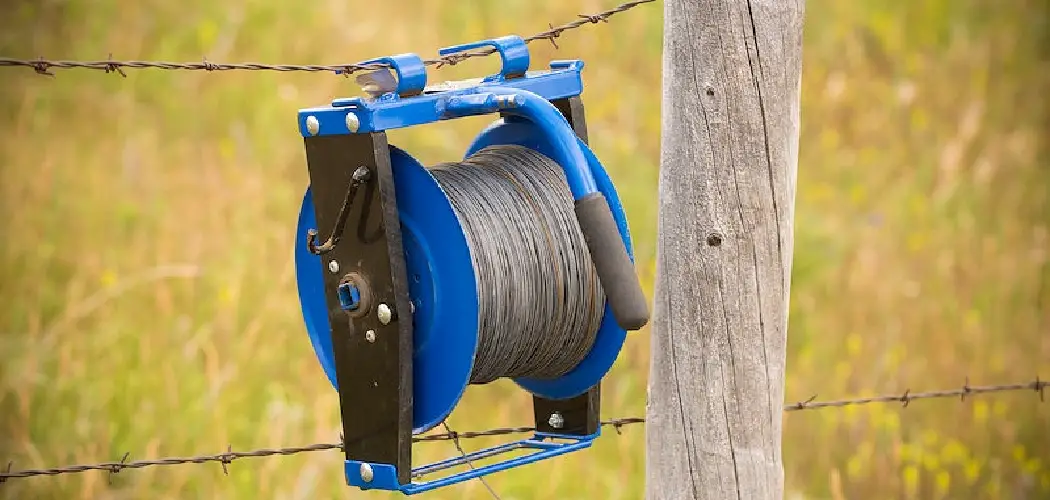Are you having trouble keeping your barbed wire fence taut and secure? A sagging or loose fence not only looks unsightly but it also makes it easier for animals to escape or unwanted visitors to enter. Don’t worry; tightening a barbed wire fence is simple and can be done in just a few easy steps.
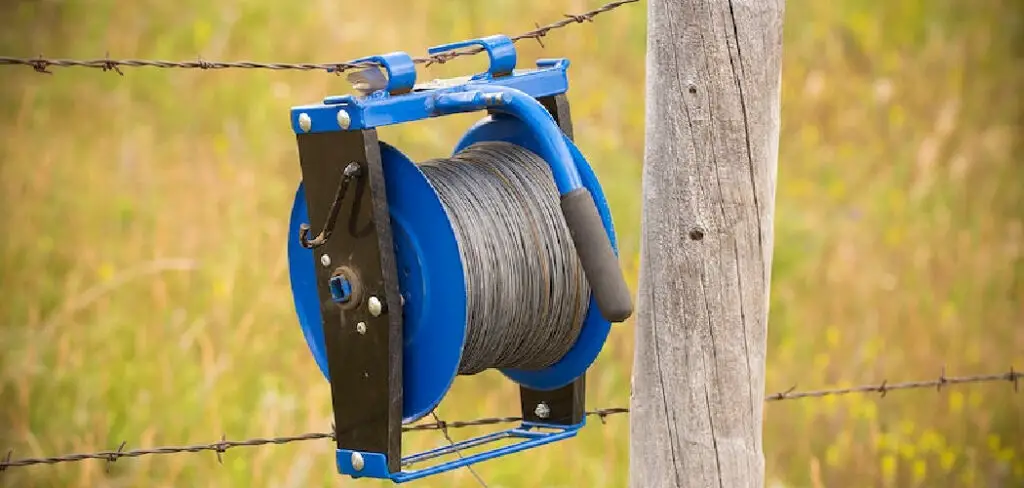
Barbed wire fencing is a great way to provide protection and security for any property, but it’s also important to ensure your fence is always well-maintained. If your barbed wire fence has become loose over time or needs some extra support, then knowing how to tighten the fence properly can be a useful skill.
In this blog post, we’ll walk you through the steps of how to tighten barbed wire fence, so you can keep your property secure and looking its best.
What You’ll Need
Before we get started, here are a few materials that you’ll need to have on hand:
- Fence stretcher or come-along
- Wire cutters
- Tensioning tool (such as a barbed wire gripper)
- Pliers
- Hammer
- Metal fence clips
- T-posts (if needed)
With these supplies, you’ll be ready to tighten your barbed wire fence and ensure its stability and durability.
10 Easy Steps on How to Tighten Barbed Wire Fence
Step 1: Assess the Fence
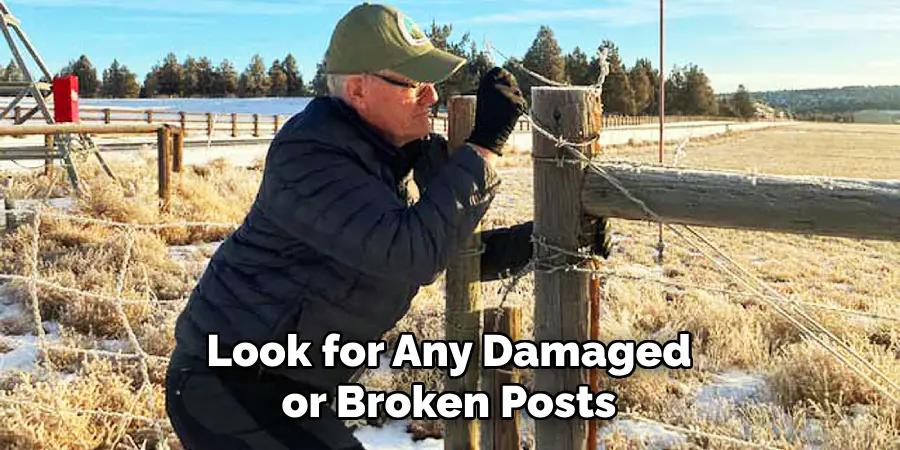
The first step in tightening a barbed wire fence is to assess its current condition. Walk along the length of the fence and check for any areas that are sagging or have loose wires. Look for any damaged or broken posts that may need to be replaced.
Step 2: Prepare the Tools
Gather all your tools and bring them close to the fenced area that needs tightening. This will make the process smoother and more efficient. If you’re using a fence stretcher or come-along, ensure it’s in good working order before starting. If any T-posts need to be replaced, now is the time to do so.
Step 3: Attach the Fence Stretcher
The fence stretcher (or come-along) is crucial for creating tension and straightening the fence. Attach one end of the fence stretcher to a solid anchor point, such as a sturdy post. Then, attach the other end to the sagging part of the barbed wire fence using the tensioning tool. Make sure the connections are secure before proceeding to the next step.
Step 4: Apply Tension to the Fence
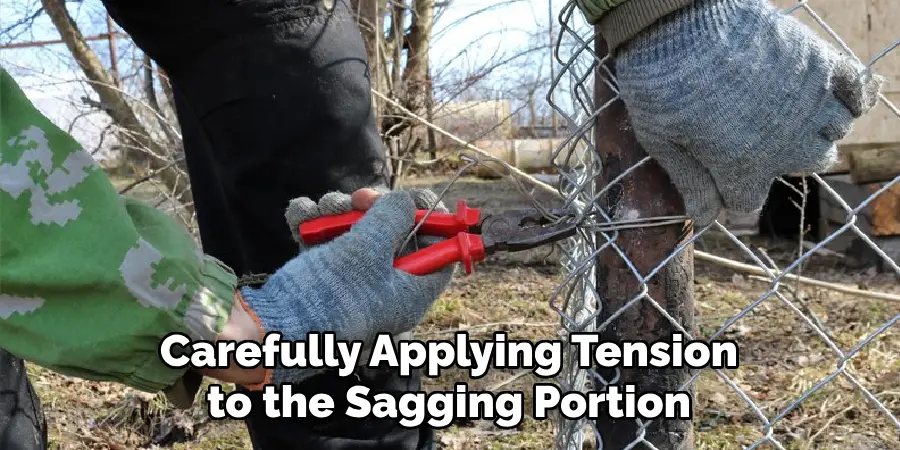
Start to crank the handle of the fence stretcher, carefully applying tension to the sagging portion of the fence. Continue to tighten the fence until it is straight and taut. Be cautious not to over-tighten as it can cause the wire to snap or damage the posts. Always wear gloves and safety glasses while tightening the fence to protect yourself from potential injuries.
Step 5: Secure the Wire to the Post
Once the wire is taut, it’s time to secure it to the fence post. Attach a metal fence clip around the wire and the post using your pliers to hold the tension. Adjust the clip as needed so it sits snugly on the wire and doesn’t allow for any slack. Repeat this process for each loose or sagging section of the fence.
Step 6: Check the Tension and Adjust if Necessary
After securing the wire, step back and inspect the fence from a distance. The wires should be straight and evenly tensioned. If you notice any areas of the fence that are still sagging or if the fence is too tight, you may need to adjust the tension. To do so, simply loosen the fence clips, adjust the tension with the fence stretcher, and then reattach the clips.
Step 7: Repeat the Process for All Loose Wires
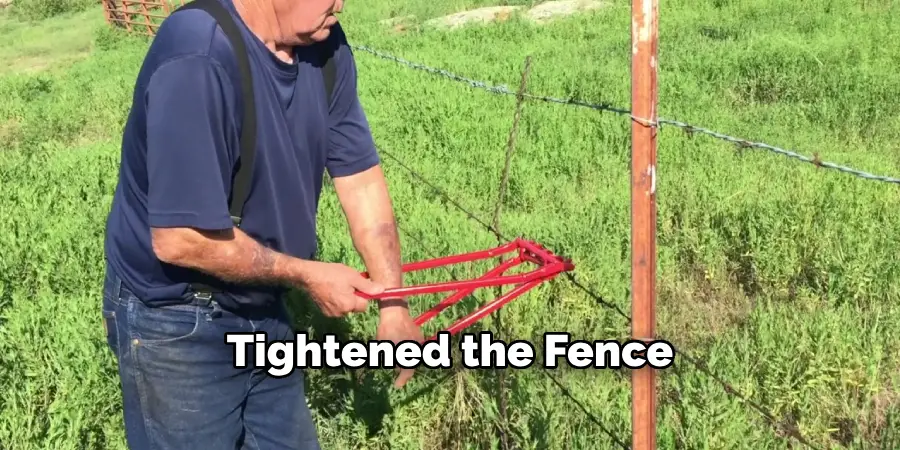
Once you have successfully tightened one section of your barbed wire fence, it’s time to repeat this process. Move along the fence line, repeating steps 3 to 6 for each loose or sagging wire until you have tightened the fence. Always maintain a consistent level of tension across all wires to ensure optimal fence strength and stability.
Step 8: Regularly Inspect and Maintain Your Fence
The key to a long-lasting, effective barbed wire fence is regular maintenance. Inspect your fence regularly for signs of sagging or damage, and address any issues promptly to keep it at its best. Regular tightening and adjustments will ensure the fence remains secure and effective in protecting your property.
Step 9: Cleanup
Once you’ve inspected and tightened the entire fence, gather your tools and clean up the area. Proper storage of your tools will ensure they’re ready for the next maintenance check. Try to leave the surrounding area free of debris and check for potential hazards that could damage your fence.
Step 10: Enjoy Your Well-maintained Fence

With the well-tightened and secure fence, you can rest easy knowing your property is well-protected. Your barbed wire fence will continue effectively serving its purpose, keeping your area secure and visually appealing. Remember to check and maintain your fence to ensure its longevity regularly.
By following these steps, you can maintain the integrity and longevity of your barbed wire fence, ensuring it remains an effective deterrent and boundary for many years to come.
5 Additional Tips and Tricks
- Safety First: Always wear heavy-duty gloves to protect your hands from the barbs and a sturdy pair of boots to protect your feet while working on the fence.
- Regular Inspections: Regularly inspect your fence line. Look for sagging wires, loose posts, or damaged sections, which may need to be tightened or repaired.
- Use the Right Tools: Invest in a good quality fence stretcher, wire cutters, and pliers. These tools will make tightening the fence much easier and more efficient.
- Avoid Over-Tightening: When tightening the barbed wire, be careful not to over-tighten it as it could snap. The fence should be taut but still have a little give.
- Maintenance is Key: Maintain your fence regularly to ensure it stays effective and lasts longer. Keep vegetation away from the fence line, as it can cause the fence to sag and rust over time.
Besides these tips, a few additional tricks can help you tighten your barbed wire fence effectively.
5 Things You Should Avoid
- Ignoring Minor Damages: Small damages can quickly escalate into bigger problems that may require extensive repair. Address any minor issues as soon as you notice them.
- Using Inferior Quality Materials: Keep the quality of the fencing materials. Inferior quality barbs or wires may not withstand harsh weather conditions and may need to be replaced frequently.
- Skipping Regular Maintenance: Avoid the temptation to skip regular maintenance. Even though it may seem tedious, routine checks and maintenance are essential to keep your fence in the best condition.
- Not Wearing Protective Gear: Do not start the task without wearing protective gear. This isn’t a job to be done with bare hands and feet. Protect yourself from potential injuries.
- Not Seeking Professional Help When Needed: If a job is too big, or you’re unsure about how to tighten the fence properly, don’t hesitate to seek professional help. Incorrectly tightened fences can cause a host of problems down the line.
Avoiding these mistakes and following the tips provided will help you effectively tighten your barbed wire fence.
How Do You Size Barbed Fittings
To properly tighten your barbed wire fence, you must first ensure that all the fittings are of the correct size. Here is a step-by-step guide on how to determine the right size for your barbed fittings:
- Measure the diameter of your fence post using a tape measure. This will determine the size of the fitting needed.
- Next, measure the distance between the two posts where you will be attaching the wire.
- Add 6 inches to this measurement as a buffer for tightening and securing the wire.
- Subtract the fence post diameter from the total measurement (including the buffer).
- Choose a fitting size that is slightly smaller than this final measurement.
By following these steps, you can ensure that your barbed fittings are the correct size for your fence, allowing you to tighten it effectively.
Which Type of Barbed Wire is Best
Several types of barbed wire are available on the market, and choosing the right one can make a significant difference in the effectiveness and longevity of your fence. Here are some factors to consider when selecting the best type of barbed wire for your fence:
- Gauge: The gauge refers to the thickness of the wire. A higher gauge means a thinner wire, while a lower gauge means a thicker wire. Thicker wires are more durable and can withstand harsh weather conditions.
- Barb Spacing: The spacing between barbs is crucial in deterring animals from crossing the fence. A standard spacing of 5 inches is recommended for most farm fences.
- Coating: Barbed wire can be coated with materials such as zinc or PVC, which protect against corrosion and rust. Choose a coating that is suitable for your local climate.
- Strength: Some types of barbed wire may be stronger than others, making them more suitable for containing larger animals.
Considering these factors, you can choose the best type of barbed wire for your specific needs and tighten your fence with confidence.
Conclusion
how to tighten barbed wire fence does not have to be intimidating. With the right materials, preparation, and installation plan, it can be quite easy — even for a beginner! It is important to ensure that your fence has enough tension for your needs while remaining secure. You can quickly and efficiently tighten barbed wire fences using the appropriate tools and techniques without too much difficulty.
Tightening the wires does take some work, but the effort is well worth it when you see the result of an attractively sturdy fence. Finally, never forget that safety always comes first; always stay alert and cautious when handling fencing materials or performing any maintenance on the structure itself.
Hopefully, these tips and tricks have helped you better understand the process of tightening barbed wire fences. Regularly inspect and maintain your fence to ensure its longevity and effectiveness. Happy fencing!

